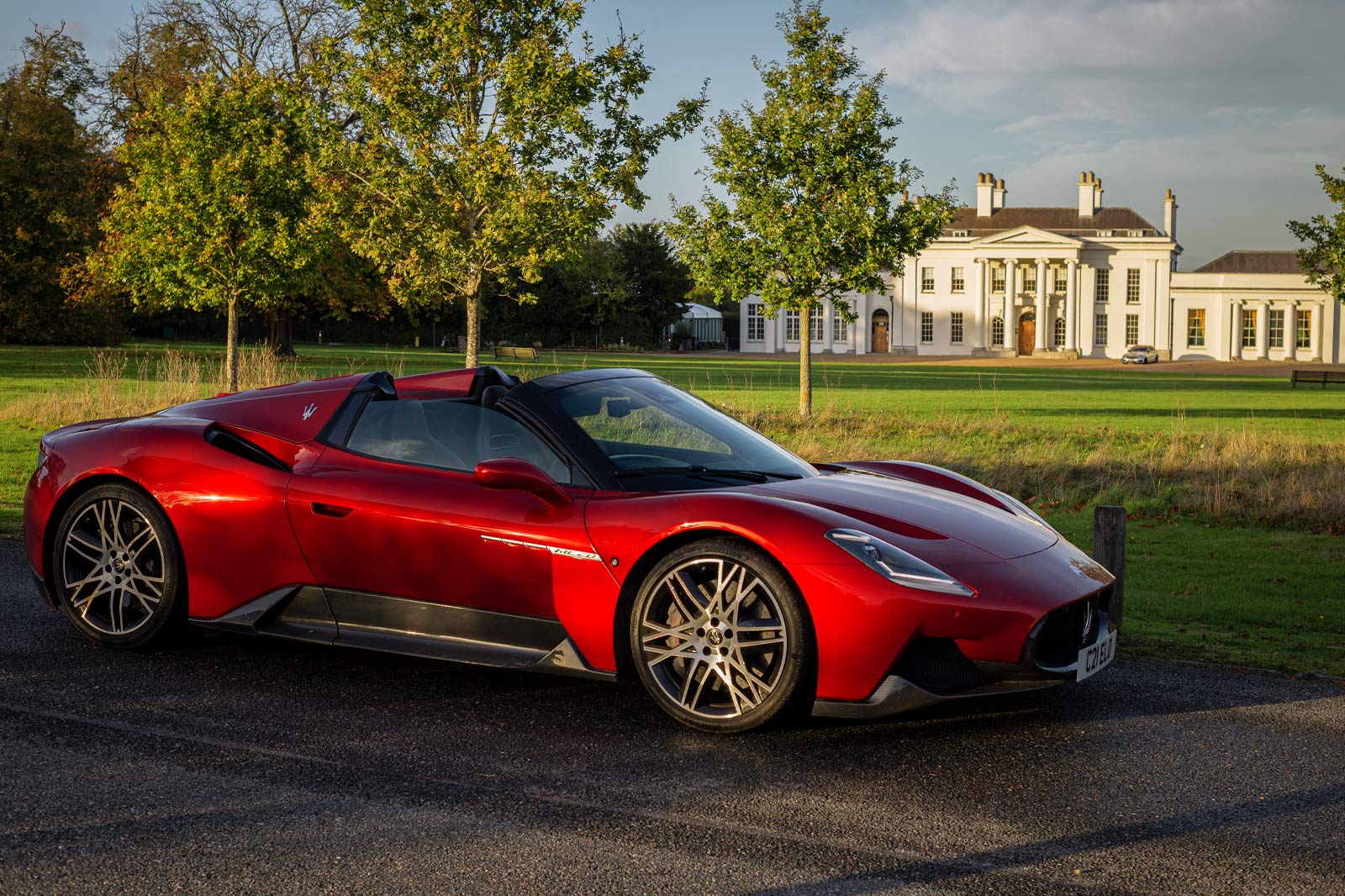
What better way to test and review a fully-fledged convertible supercar than in the real-world conditions of a soggy October in southern England? With autumn leaves on the ground, a chill in the air, and a round of golf to be had, it’s a slice of the real world for a car blessed with out of this world performance. We’re talking about the Maserati Cielo.
Let’s get the stats out of the way nice and early shall we. Sat in the middle of the car is a twin-turbo, Nettuno tuned, dry-sump V6 that produces 621bhp and 730 newton metres of torque at its peak. Paired with an eight-speed twin-clutch transmission flowing through a very smart LSD, it means through its rear wheels that the Cielo will propel you from 0-62mph in 2.9 seconds and onto a top speed of 199mph. That’s fast by anyone’s standards. Weighing in at 1,540kg, it’s 65kg heavier than the coupe, and although I haven’t driven the hard top, I bet the average person would be hard pressed to tell the difference.
With a golf game schedule two hours from home, I departed at 5.30am in the dry and made the most of the empty roads to put the Maserati Cielo in Sport mode. Only the third most aggressive of five available via a central rotating control (Wet, GT, Sport, Corsa, and ESC off). In these different modes the engine power, pedal feel, exhaust noise, gear shifts, suspension, and traction are all tweaked and there’s a separate button to mix and match the dampers to your preference.
As I race down to Kent at perfectly legal yet aggressive speeds, the carbon-fibre monocoque, which was developed in partnership with racing team Dallara, feels incredibly rigid despite the lack of roof. The car squirms in a controllable manner as I plant the throttle and even in the slightly slick, leaf litter strewn corners you can still achieve Tron-esque pivots.
After the very wet round of golf, I was a little worried about jumping back into the Cielo. Any other supercar I’ve driven doesn’t really do wet weather very well. Pair that with a slightly achy back and you’ve a recipe for a middle age disaster. Herein lies the Cielo’s greatest trick. In GT or Wet mode the car is relaxed, comfortable and able to take bumps and potholes on rubbish British B-roads with ease. Despite its Italian heritage, you’d be forgiven for thinking this car had been designed with wetter northern climes in mind.
The biggest takeaway from driving the Cielo is just how incredibly easy and delightful an experience it is. The roof, albeit operated by a control on the touch screen (boomers hate this one trick) goes up and down in 12 seconds and you can activate it at up to 31mph. The glass in the roof is also filled with liquid crystal tech enabling you to change the lighting conditions at the touch of a button and bring the sky (Cielo in Italian) into the car.
I connected to the Android auto within seconds, something that even the Maserati (technician) was impressed with, and all the controls feel very intuitive. They may sound like small things on what is quarter of a million-pound plus car, but all these add up. Of course, this car is quick, but it’s also the most liveable spider I’ve ever driven.
On top of all of that it has a distinctive look that I absolutely adore. There are whiffs of the iconic MC12 in the nose and the rear, albeit slightly more generic unless sculpted and accentuated by this particular model’s exterior carbon fibre package. The butterfly doors add to the drama and in the specced up Rosso Vincente it’s a real head turner.
Inside the cockpit of the Cielo the layout is fairly reserved except for lashings of optional Alcantara and carbon fibre. There’s a distinct lack of buttons which will put some people off. It feels very well made, if perhaps slightly less luxe than you might expect for the price bracket (from £222,990). The seats are also incredibly comfortable and heated, the driving position is on-point, and the handles to close the gullwing doors make you feel like a racing driver.
There are some drawbacks, albeit minor. The boot is small (150 litres) and likely to slow-cook anything in there on long journeys. However, I managed to fit two weekend bags in it, while also resting my golf bag in the passenger seat. There’s also been talk of a lacklustre score from the V6, however paired with a slightly retro wastegate whooshing sound I found the engine sound quietly menacing. Yes, it’s not a screaming V12, but it’s characterful. The fuel tank is also small at 60 litres – 18 litres smaller than the Ferrari F8 Spider – making its use limited as a GT.
All that considered however I’m still in love with this car. It has an esoteric cool appeal, the styling is distinct and unique, it’s plenty fast enough and it’s totally useable. If it’s this or a Jacob & Co Astronomia, I know which I would choose.
More details at Maserati.
Oracle Time